Lipid-polymer Hybrid Nanoparticle-based mRNA Delivery System for Biologics
Inquiry
Lipid-polymer hybrid nanoparticles possess the ability to be readily absorbed in the gastrointestinal tract and maintain the stability of drug compounds. They find applications across various medical fields, such as cancer treatment, gene delivery, nucleic acids, and siRNA. At CD Formulation, we focus on the design, fabrication, and characterization of lipid-polymer hybrid nanoparticles, providing tailored mRNA delivery solutions for biologics.
Classification of Lipid-polymer Hybrid Nanoparticles
Lipid-polymer hybrid nanoparticles (LPHNPs) are synthesized from liposomes and polymeric nanoparticles, characterized by a polymer core enveloped in a lipid layer. These nanoparticles comprise three distinct components: a lipid monolayer encasing the polymer core, and an outer lipid-PEG layer that enhances the systemic circulation of LPHNPs by mitigating immunogenic degradation. The intermediate lipid monolayer serves as a molecular barrier, safeguarding the core by inhibiting water diffusion into the inner structure and minimizing the loss of encapsulated drugs during the formulation of LPHNPs.
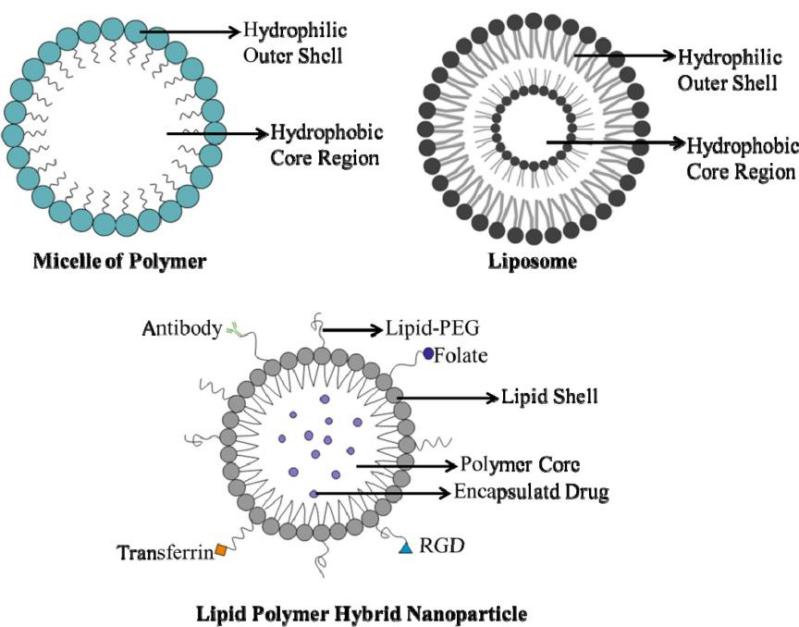 Fig.1 Structural organization of micelle of polymer, liposome, and LPHNP exhibiting hydrophobic and hydrophilic cores. (Shama Parveen, et al. 2023)
Fig.1 Structural organization of micelle of polymer, liposome, and LPHNP exhibiting hydrophobic and hydrophilic cores. (Shama Parveen, et al. 2023)
Lipid-polymer hybrid nanoparticles can be classified according to their unique structural arrangements of lipids and polymers. The classifications encompass nanoparticles featuring a polymer core surrounded by a lipid shell, polymer-encapsulated nanoparticles, lipid-polymer-lipid nanoparticles, monolithic lipid-polymer hybrid nanoparticles, and lipid-polymer hybrid nanoparticles coated with erythrocyte membranes.
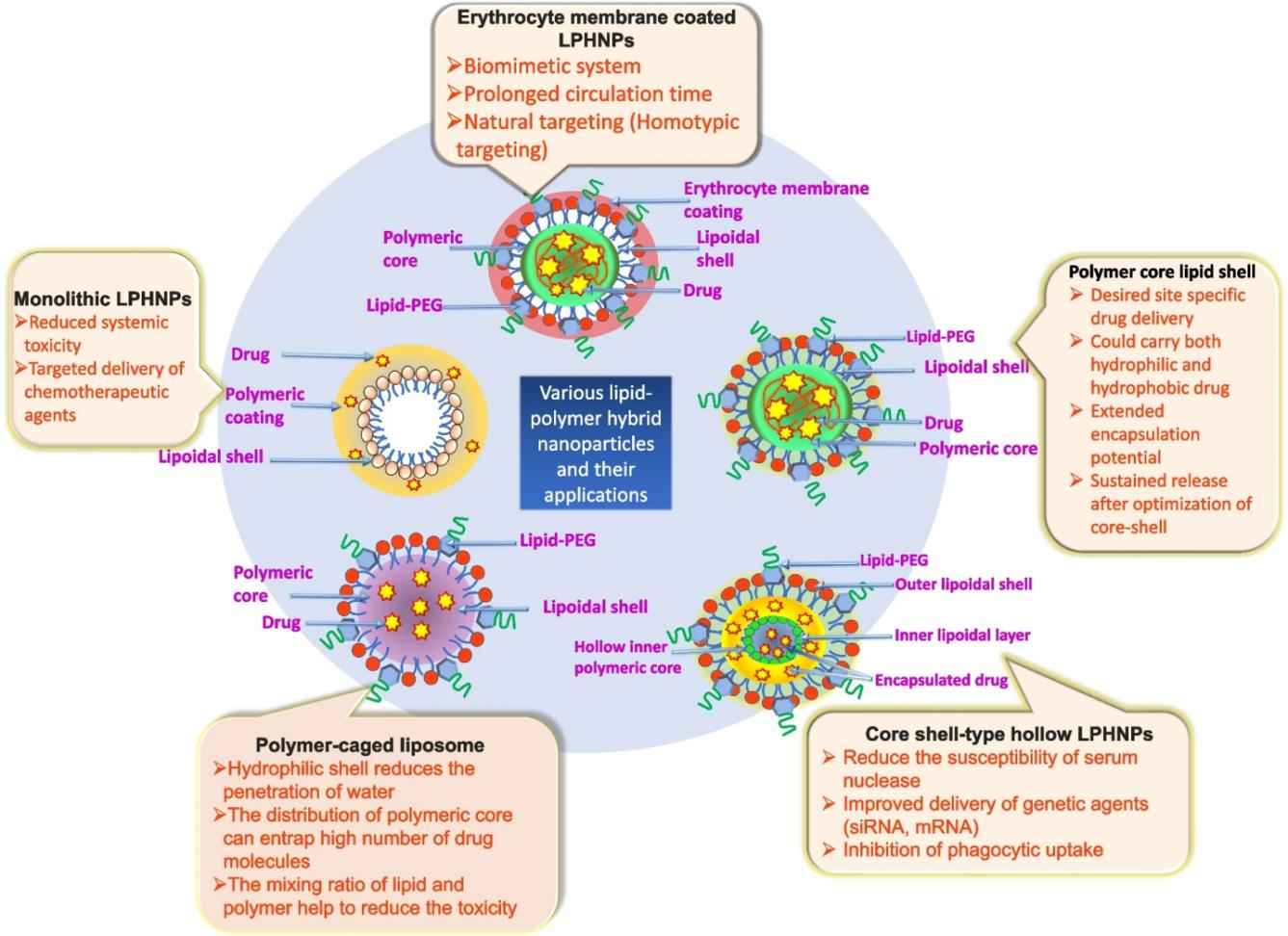 Fig.2 Graphical illustration of various LPHNPs and their application in drug delivery. (Kavita R. Gajbhiye, et al. 2023)
Fig.2 Graphical illustration of various LPHNPs and their application in drug delivery. (Kavita R. Gajbhiye, et al. 2023)
Advantages of Lipid-polymer Hybrid Nanoparticles
Lipid-polymer hybrid nanoparticles offer several key advantages in mRNA delivery:
- High Encapsulation Efficiency: LPHNPs efficiently encapsulate both hydrophilic and lipophilic compounds.
- Controlled Release: The polymer core allows for precise control over drug release.
- Enhanced Stability: The lipid-PEG layer enhances the biocompatibility and stability of nanoparticles.
- Targeted Delivery: LPHNPs provide the ability to solubilize hydrophobic drugs, improving their delivery to target tissues.
Applications of Lipid-polymer Hybrid Nanoparticle-based Systems
Lipid-polymer hybrid nanoparticles are suitable for several advanced biomedical applications, including:
- Drug Delivery: LPHNPs improve the solubility and bioavailability of poorly soluble drugs, making them effective carriers for chemotherapy agents.
- Cancer Therapy: These nanoparticles can be designed to transport medications directly to tumor cells, reducing side effects and improving therapeutic outcomes.
- Gene Therapy: LPHNPs provide a versatile platform for delivering genes, particularly for precision-targeted cancer treatments.
- Clinical Diagnostics: Lipid-polymer hybrid nanoparticles enhance the precision of diagnostic imaging and therapeutic interventions.
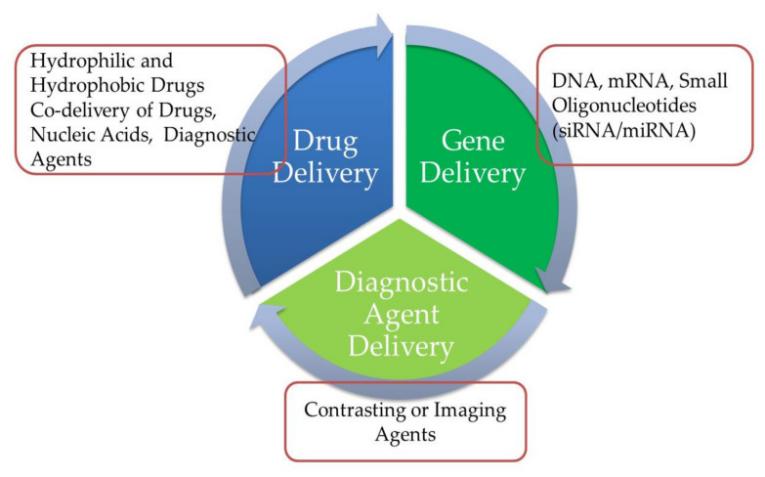 Fig.3 Diagram depicting the biopharmaceutical applicability of polymer-lipid hybrid nanoparticles (PLNs). (Durgaramani Sivadasan, et al. 2021)
Fig.3 Diagram depicting the biopharmaceutical applicability of polymer-lipid hybrid nanoparticles (PLNs). (Durgaramani Sivadasan, et al. 2021)
Fabrication Methods for Lipid-polymer Hybrid Nanoparticles
Lipid-polymer hybrid nanoparticles are ingeniously crafted with a polymer core that cradles the precious payload, enveloped by a lipid shell and topped off with a sleek lipid-PEG layer. CD Formulation has pioneered two innovative techniques for creating these remarkable nanoparticles: a meticulous two-step process and a streamlined one-step approach.
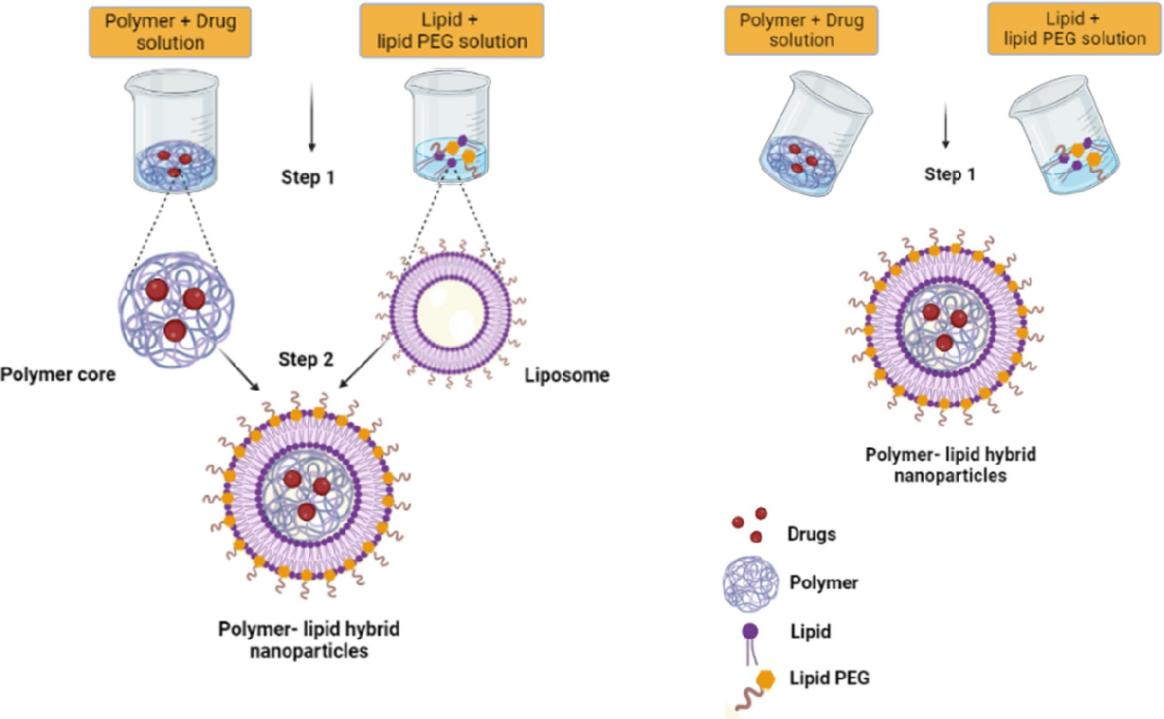 Fig.4 Synthesis of LPHNPs through (i) Two-step method and (ii) One-step method. (Shama Parveen, et al. 2023).
Fig.4 Synthesis of LPHNPs through (i) Two-step method and (ii) One-step method. (Shama Parveen, et al. 2023).
One-Step Method
We use a one-step method (e.g., emulsification, solvent evaporation, and nanoprecipitation) to mix lipids and polymers, which ultimately self-assemble to form lipid-polymer hybrid nanoparticles. Precipitation of organic lipid aqueous solution occurs in the lipid aqueous solution, followed by self-assembly on the polymer core through hydrophobic interactions to obtain lipid-polymer hybrid nanoparticles.
Emulsification Solvent Evaporation Method: In this method, we first add aqueous lipids or water-insoluble lipids to an organic solvent mixture, and the lipid molecules self-assemble onto the hydrophobic polymer core and encapsulate the drug. Finally, the organic solvent is evaporated, and lipid-polymer hybrid nanoparticles are produced after homogenization and ultrasonic treatment.
Nanoprecipitation: We first dissolve the drug and polymer in water or any organic solvent, and then add lipids or lipid PEGs to the aqueous medium for dispersion to prepare lipid-polymer hybrid nanoparticles.
Two-Step Method
In this method, we employ a two-step approach to separately synthesize polymer-based and lipid-based nanoparticles, which were subsequently combined through electrostatic interactions to form lipid-polymer hybrid nanoparticles. The preparation of polymer-based nanoparticles involved the dissolution of water in organic solvents utilizing techniques such as nanoprecipitation, emulsion solvent evaporation, or high-pressure homogenization. Conversely, lipid-based nanoparticles were generated using a range of methodologies, including microemulsification, ultrasound, high-pressure homogenization, emulsification, solution emulsification, solvent emulsification, and solvent injection.
Developing Lipid-Polymer Hybrid Nanoparticles for mRNA Delivery Systems
At CD Formulation, we have developed a comprehensive workflow for the formulation and development of lipid-polymer hybrid nanoparticles designed specifically for mRNA delivery:
- Polymer and Lipid Selection: Based on the target application, we select appropriate polymers and lipids.
- Nanoparticle Synthesis: Using either the one-step or two-step method, we fabricate nanoparticles optimized for stability and encapsulation efficiency.
- Characterization and Quality Control: Nanoparticles are characterized for size, surface charge, and encapsulation efficiency using advanced analytical techniques.
- Custom Formulation Development: We work closely with clients to provide custom solutions tailored to their specific mRNA delivery requirements.
The methodologies employed in our lipid-polymer hybrid nanoparticle-based mRNA delivery system are outlined as follows.
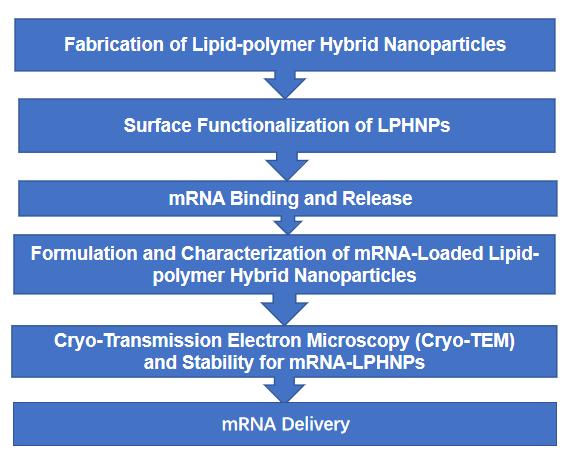 Fig.5 Our development process of lipid-polymer hybrid nanoparticle-based on mRNA delivery system. (CD Formulation)
Fig.5 Our development process of lipid-polymer hybrid nanoparticle-based on mRNA delivery system. (CD Formulation)
Why Choose CD Formulation?
- Depending on our mRNA delivery technology and nanotechnology platform, we can provide customers with formulation development and characterization services for lipid-polymer hybrid nanoparticles, catering to mRNA delivery.
- We have lots of experience in researching and constructing lipid-polymer hybrid nanoparticle-based mRNA delivery systems for biologics.
- Our core team has also developed fabrication methods of lipid-polymer hybrid nanoparticles for mRNA delivery to meet customers' requirements.
Published Data
Technology: Polymer-lipid hybrid systems in mRNA delivery
Journal: Matter
IF: 17.3
Published: 2022
Results:
The authors provided a comprehensive overview of various polymer-lipid hybrid systems designed for the delivery of mRNA encoding melanoma antigens, aimed at preventing the progression and metastasis of B16 melanoma. This review highlights systems based on PEGylated histidine polylysine (PEG-HpK), poly (beta-amino esters) (PBAE), poly(lactic-co-glycolic acid) (PLGA), dendrimers, among other polymer-lipid hybrid configurations. Additionally, the authors noted the development of mRNA delivery systems utilizing alternative polymers, such as polyethyleneimine (PEI), poly(glycolic acid) (PGAA), amino-terminated poly(ethylene glycol) (APE), polylactide (PLA), and poly(disulfamide) (PDSA).
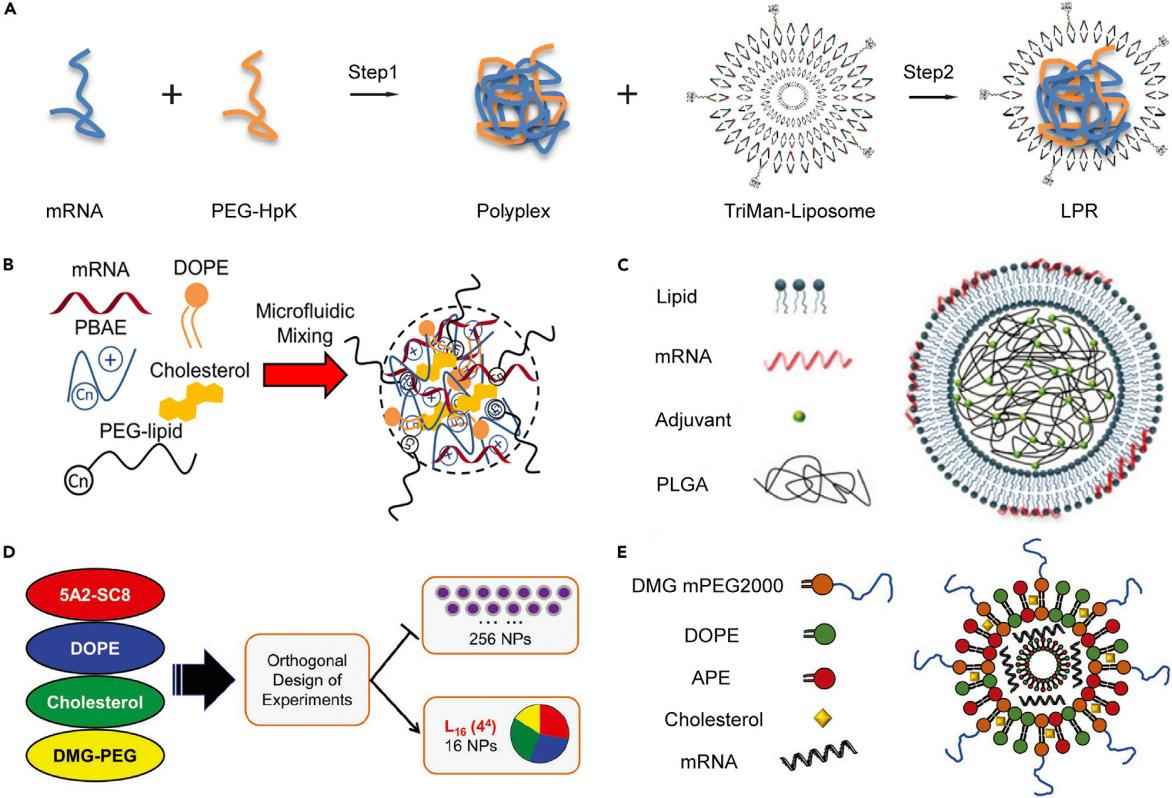 Fig.6 Schematic illustration of representative polymer-lipid hybrid systems. (Pei Huang, et al.2022)
Fig.6 Schematic illustration of representative polymer-lipid hybrid systems. (Pei Huang, et al.2022)
Our advanced mRNA delivery technology, which utilizes a lipid-polymer hybrid nanoparticle-based system, demonstrates significant potential for applications in drug delivery, cancer treatment, and gene therapy. CD Formulation is well-equipped to provide clients with R&D services for lipid-polymer hybrid nanoparticle-based mRNA delivery systems. If you are interested in our lipid-polymer hybrid nanoparticle-based mRNA delivery technologies, we encourage you to contact us for more information.
References
- Shama Parveen, Pratishtha Gupta, Saurabh Kumar, et al. Lipid polymer hybrid nanoparticles as potent vehicles for drug delivery in cancer therapeutics. Medicine in Drug Discovery. 2023, 20,100165.
- Kavita R. Gajbhiye, Rajesh Salve, Mahavir Narwade, et al. Lipid polymer hybrid nanoparticles: a custom-tailored next-generation approach for cancer therapeutics. Molecular Cancer. 2023,22, 160.
- Durgaramani Sivadasan, Muhammad Hadi Sultan, Osama Madkhali, et al. Polymeric Lipid Hybrid Nanoparticles (PLNs) as Emerging Drug Delivery Platform-A Comprehensive Review of Their Properties, Preparation Methods, and Therapeutic Applications. Pharmaceutics. 2021,13(8): 1291.
- Pei Huang, Hongzhang Deng, Yongfeng Zhou, et al. The roles of polymers in mRNA delivery. Matter. 2022,5,1670-1699.
How It Works
STEP 2
We'll email you to provide your quote and confirm order details if applicable.
STEP 3
Execute the project with real-time communication, and deliver the final report promptly.
Related Services


 Fig.1 Structural organization of micelle of polymer, liposome, and LPHNP exhibiting hydrophobic and hydrophilic cores. (Shama Parveen, et al. 2023)
Fig.1 Structural organization of micelle of polymer, liposome, and LPHNP exhibiting hydrophobic and hydrophilic cores. (Shama Parveen, et al. 2023) Fig.2 Graphical illustration of various LPHNPs and their application in drug delivery. (Kavita R. Gajbhiye, et al. 2023)
Fig.2 Graphical illustration of various LPHNPs and their application in drug delivery. (Kavita R. Gajbhiye, et al. 2023) Fig.3 Diagram depicting the biopharmaceutical applicability of polymer-lipid hybrid nanoparticles (PLNs). (Durgaramani Sivadasan, et al. 2021)
Fig.3 Diagram depicting the biopharmaceutical applicability of polymer-lipid hybrid nanoparticles (PLNs). (Durgaramani Sivadasan, et al. 2021) Fig.4 Synthesis of LPHNPs through (i) Two-step method and (ii) One-step method. (Shama Parveen, et al. 2023).
Fig.4 Synthesis of LPHNPs through (i) Two-step method and (ii) One-step method. (Shama Parveen, et al. 2023). Fig.5 Our development process of lipid-polymer hybrid nanoparticle-based on mRNA delivery system. (CD Formulation)
Fig.5 Our development process of lipid-polymer hybrid nanoparticle-based on mRNA delivery system. (CD Formulation) Fig.6 Schematic illustration of representative polymer-lipid hybrid systems. (Pei Huang, et al.2022)
Fig.6 Schematic illustration of representative polymer-lipid hybrid systems. (Pei Huang, et al.2022)
